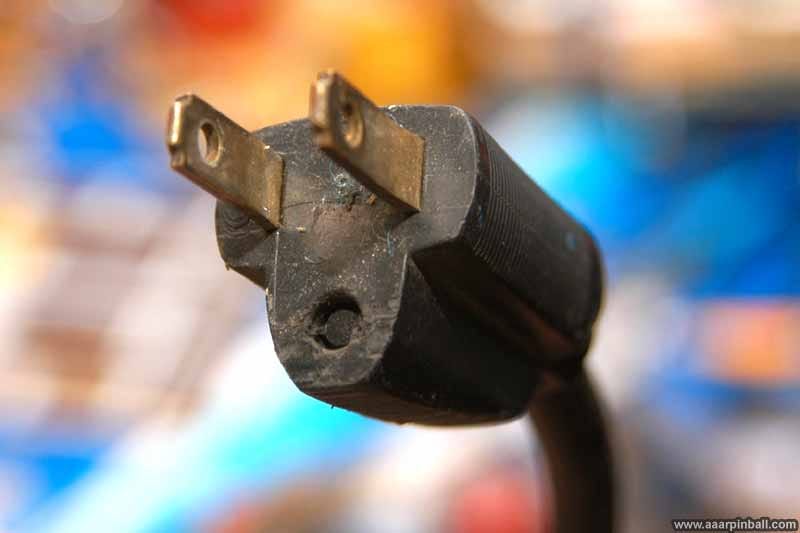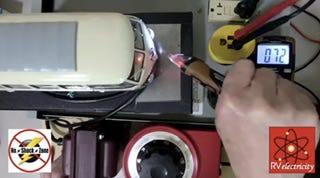Dear Mike,
After reading your article on RV hot-skin voltage I ordered a Southwire 40126N Non-Contact Voltage Tester, but now wonder if it’s the correct tool. According to the directions it detects voltage by putting it near a hot plug. But will it also find a hot-skin voltage by putting it next to the skin of an RV? —John Baxley
Great question John,
But first a quick review of what a hot-skin/stray voltage is. Normally, the skin and chassis of your RV is within 5 volts AC of the earth. It’s the job of the ground wire in your shore power cord and pedestal to keep it down to this safe voltage. But if the ground wire is loose or broken in your electrical connection, this voltage can rise to 30, 60 or even 120 volts. Anything over 30 volts can be dangerous to your heart, so if you detect 30 volts or more, then you should disconnect your RV immediately until the problem can be corrected.
How this testing works….
I came up with this very simple proximity hot-skin/stray voltage test over 10 years ago, but the manufacturers haven’t included it in their owner’s manuals yet, which is why you didn’t read about it. But you can watch my video showing how it works HERE or by clicking on the picture below. :
I have a variable AC power supply, my VW micro-bus, and several different Non-Contact Voltage Testers I always recommend for my readers. Of course there are other brands and models that will work, but let’s keep it simple for now.
I can recommend the following testers, many of which are available at Lowe’s and Home Depot, as well as Amazon. I have all of these Non-Contact Voltage Testers on my FunkWorks Lab bench, and have done dozens of hot-skin tests on each one. Here’s links to them on Amazon.
Fluke VoltAlert 1AC-A II rated for 90 to 1,000 VAC
Klein NCVT2P rated for 12 to 1,000 VAC (dual range)
Southwire 40116N rated for 100 to 600 VAC
Southwire 40150N rated for 12 to 1,000 VAC (dual range)
Even though many of these testers are rated to find conductor potentials higher than 50 or even 90 volts, they all work great at finding a hot-skin voltage as low as 30 or 40 volts on something as large as a campground pedestal or your RV. Watch the video above to see this in action.
These same manufacturers also make dual-range testers, such as the Southwire 40116N I mentioned. And these will work to detect a hot-skin/stray voltage as long as you leave them in high-voltage mode. If you set them in the 24-volt low range they may be too sensitive for this test and you can get false positive warnings if you’re around other energized wires. Read the directions to make sure these are set in the high-voltage range to use them for a hot-skin/stray voltage test.
Lets play safe out there… Mike








In the power industry we always did a live-dead-live test when testing for potential voltage. This helps to ensure that your meter, non contact tester or any other testing device did not fail after the first live test.